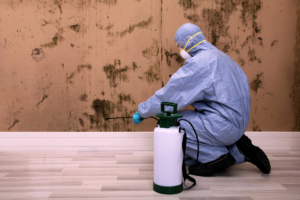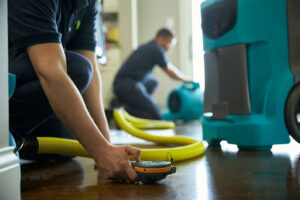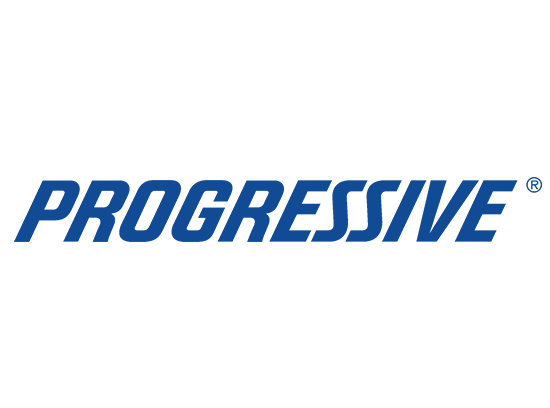Water damage can be a homeowner’s worst nightmare, causing extensive damage to your property and belongings. To avoid costly repairs and minimize the impact, it’s important to know what mistakes to avoid when dealing with water damage. In this section, we will discuss the crucial steps you should take to prevent common mistakes and mitigate risks. By following these guidelines, you can protect your home and ensure a smooth restoration process.
Key Takeaways:
- Act quickly to minimize the damage caused by water infiltration.
- Do not delay in calling a professional for help.
- Avoid attempting DIY repairs without proper knowledge.
- Don’t ignore hidden moisture, as it can lead to further damage and health hazards.
- Diligently document the damage for insurance claims and evidence purposes.
Act Quickly to Minimize Damage
When it comes to water damage, time is of the essence. Acting quickly can make a significant difference in minimizing further damage to your property. Immediate action can help prevent structural issues, mold growth, and costly repairs. Here are the steps you should take right away to minimize the impact of water damage:
- Ensure your safety: Before addressing the water damage, make sure it is safe to enter the affected area. If there is a risk of electrical hazards or structural instability, it’s essential to prioritize your safety and seek professional assistance.
- Stop the water source: If you can safely identify and access the source of water causing the damage, shut it off as soon as possible. This will help prevent further water intrusion and limit the scope of the damage.
- Remove standing water: Using a wet/dry vacuum or a bucket, remove any standing water from the affected area. The faster you can remove the water, the better chance you have of preventing additional damage.
- Move belongings: If possible, move furniture, rugs, and other valuable items out of the affected area to a dry location. This will prevent further water absorption and potential damage.
- Maximize airflow: Open windows and doors to increase ventilation and promote air circulation. This will help dry out the space more efficiently and reduce the risk of mold growth.
- Use fans and dehumidifiers: Set up fans and dehumidifiers in the affected area to speed up the drying process. These appliances will help remove excess moisture from the air and prevent further damage.
- Contact a water damage restoration professional: While you can take initial steps to minimize damage, it’s crucial to involve a professional with expertise in water damage restoration. They have the necessary equipment and knowledge to thoroughly assess the situation and provide appropriate solutions.
Acting quickly is key to minimizing the impact of water damage. By following these steps, you can take immediate action and reduce the potential for further damage to your property.
Do Not Delay Calling a Professional
When dealing with water damage, time is of the essence. Delaying in calling a professional can lead to more severe damage and expenses in the long run. It is crucial to involve experts who can assess the situation and provide appropriate solutions. By seeking professional help promptly, you can mitigate the risks and ensure a swift and effective restoration process.
Water damage can have various causes, such as burst pipes, roof leaks, or flooding. Regardless of the source, the longer the water sits, the greater the damage and potential complications. Moisture can seep into the structure of your home, leading to weakened foundations, mold growth, and further deterioration.
Attempting to handle water damage on your own or postponing professional assistance can exacerbate the problem. Professionals have the expertise, tools, and resources to quickly address the issue and minimize the extent of the damage. They can properly assess the situation, identify hidden moisture, and employ appropriate techniques for drying, cleaning, and restoring your property.
Moreover, professionals understand the potential risks associated with water damage, such as electrical hazards, contaminated water, and structural instability. They have the necessary safety protocols in place to protect themselves and prevent further damage while working on your property.
By promptly involving professionals, you not only reduce the risk of additional damage but also potentially save on repair costs. Water damage can quickly escalate if not properly remediated, requiring extensive renovations or even rebuilding. By acting quickly and seeking professional help, you can minimize the overall expenses and ensure a more efficient restoration process.
Remember, when it comes to water damage, every minute counts. Do not delay in calling a professional to handle the situation promptly and effectively.
| Benefits of Professional Help for Water Damage |
|---|
| Expert assessment of the situation |
| Swift action to mitigate further damage |
| Identification and addressing of hidden moisture |
| Use of specialized equipment and techniques |
| Reduction of health hazards, such as mold growth |
| Prevention of structural instability |
| Cost-effective approach and potential savings on repairs |
Avoid DIY Repairs Without Proper Knowledge
When faced with water damage, it may be tempting to take matters into your own hands and attempt DIY repairs. However, this approach can often do more harm than good. Without proper knowledge and experience, you run the risk of exacerbating the problem and causing further damage to your property.
Water damage restoration is a complex process that requires specialized expertise. Professionals have the necessary training and equipment to accurately assess the extent of the damage and implement effective restoration strategies. They understand the potential risks involved, such as mold growth and structural issues, and have the expertise to address these issues safely and efficiently.
By attempting DIY repairs without the proper knowledge, you not only put your property at risk but also compromise your safety. Water damage can lead to electrical hazards, weakened structures, and contaminated environments. Professionals prioritize safety protocols and have the necessary equipment to ensure their own safety and protect your property.
Additionally, DIY repairs can often result in inadequate and temporary fixes. Without a thorough understanding of the underlying causes of water damage, you may overlook crucial issues that could lead to recurring problems in the future. Professionals possess the knowledge and experience to identify and address the root causes of water damage, providing long-lasting solutions.
Trust the experts in water damage restoration to avoid DIY repairs without proper knowledge. Their expertise and specialized equipment will ensure that your property is restored effectively and safely, minimizing further damage and reducing the risk of future issues.
Next, let’s explore the importance of not ignoring hidden moisture and how it can lead to mold growth and structural issues in your home.
Don’t Ignore Hidden Moisture
When it comes to water damage in your home, hidden moisture is a silent but significant threat that should never be ignored. Failing to address hidden moisture can lead to a host of problems, including mold growth and structural issues. To protect your home and your family’s health, it’s crucial to learn how to identify and address hidden moisture promptly.
Hidden moisture can exist in various forms, such as damp walls, ceilings, or floors, as well as under carpets or behind furniture. These areas may not be immediately visible, but the damage they can cause over time should not be underestimated.
So, how can you identify hidden moisture in your home?
- Look for any signs of water staining, discoloration, bubbling paint, or peeling wallpaper on your walls or ceilings.
- Pay close attention to any musty or unpleasant odors in certain areas of your home, as they could indicate the presence of hidden moisture and mold.
- Inspect your floors and carpets for any areas that feel damp or show signs of water damage.
- Check the areas around plumbing fixtures, such as sinks, toilets, and showers, for any signs of leaks or moisture accumulation.
Once you’ve identified hidden moisture, it’s crucial to take immediate action to prevent further damage.
Addressing hidden moisture requires a comprehensive approach that involves both drying out the affected areas and identifying and repairing the source of the moisture. Depending on the extent of the damage, you may need to enlist the help of a professional water damage restoration company.
Don’t Forget to Document the Damage
When faced with water damage in your home, documenting the extent of the damage is essential. Proper documentation plays a vital role when filing insurance claims, ensuring that you receive the appropriate compensation for repairs and restoration.
Start by capturing clear and detailed photographs of the affected areas. Take multiple angles to provide a comprehensive view of the damage. Focus on capturing any visible signs of water intrusion, including waterlogged furniture, wet walls, and damaged flooring.
Make sure to also document any valuable items that have been directly affected by the water. Pay close attention to electronics, appliances, and personal belongings that may require specialized repairs or replacements.
Accompany your visual documentation with written descriptions of the damage. Include specific details such as the date and time the damage occurred, the cause of the water damage, and a comprehensive list of affected items.
Remember to keep any receipts related to temporary repairs or emergency services. These receipts can serve as additional evidence of the expenses incurred due to the water damage.
By thoroughly documenting the damage, you provide your insurance company with the necessary information to process your claim promptly. This step is crucial in ensuring that you receive the compensation needed to restore your home to its pre-damage condition.
| What to Document: | Why It’s Important: |
|---|---|
| Clear and detailed photographs of the damage | Visual evidence for insurance claim assessment |
| Multiple angles of the affected areas | Comprehensive view of the damage |
| Specific details of the damage | Supporting evidence for claim evaluation |
| Receipts for temporary repairs or emergency services | Proof of expenses incurred due to water damage |
Avoid Turning on Electronics in Water-Damaged Areas
When dealing with water damage in your home, it’s important to be aware of the potential risks associated with using electronic devices in water-damaged areas. Water and electricity do not mix well and can pose serious dangers if proper precautions are not taken.
Water damage can compromise the integrity of electrical systems, leading to short circuits, electrical shocks, and even fires. Even if your electronic devices appear undamaged on the outside, there may still be water inside that can cause internal damage and potentially hazardous situations.
That’s why it’s crucial to avoid turning on any electronics in water-damaged areas until they have been inspected and deemed safe by a professional. By doing so, you can prevent further damage to your devices and minimize the risk of harm to yourself and others.
Instead of attempting to power on your electronics, it’s recommended to disconnect them from power sources and remove any batteries if possible. This precautionary measure can help prevent additional damage and increase the chances of successfully restoring your devices.
In the event of water damage, it is essential to reach out to a qualified technician or electrician who specializes in water damage restoration. They have the expertise and equipment required to properly assess the situation, ensure electrical safety, and carry out any necessary repairs.
Remember, your safety and the protection of your property should always be the top priority. By avoiding the use of electronics in water-damaged areas and seeking professional assistance, you can mitigate risks, prevent further damage, and ensure a safer environment for yourself and your loved ones.
| Question | Answer |
|---|---|
| Can I use my phone if it got wet? | No, it’s best to avoid turning on wet phones. Instead, turn off the phone, remove the battery (if possible), and seek professional assistance. |
| What are the risks of using electronics in water-damaged areas? | Using electronics in water-damaged areas can lead to electrical shocks, short circuits, fires, and further damage to the devices. |
| Should I attempt to dry my electronics on my own? | No, it’s not advisable to attempt drying your electronics on your own. Improper drying methods can cause more harm than good. Seek professional assistance instead. |
| How can a professional assess the safety of my electronics? | Qualified technicians use specialized tools and techniques to thoroughly inspect electronic devices for water damage and electrical safety. |
Conclusion
In conclusion, taking immediate action is crucial when faced with water damage in your home. By acting quickly, you can minimize further damage and prevent costly repairs. Remember to involve professionals who have the expertise to assess the situation accurately and provide effective solutions.
It is important to avoid DIY repairs without the proper knowledge and understanding of water damage restoration. Attempting to fix the problem yourself can lead to more severe issues and potentially make the restoration process more challenging and expensive.
Don’t underestimate the dangers of hidden moisture. Even small amounts of moisture can lead to mold growth and structural damage over time. Take the time to identify and address hidden moisture to prevent further damage and protect your family’s health.
Lastly, documentation plays a crucial role when filing insurance claims. Take photos, videos, and detailed notes of the damage to support your claim and ensure a smoother process. Remember to avoid turning on electronics in water-damaged areas until they have been inspected by a professional.
FAQ
What are the common mistakes to avoid when dealing with water damage?
To avoid mistakes when dealing with water damage, it’s important not to delay calling a professional, avoid DIY repairs without proper knowledge, and not to ignore hidden moisture. Additionally, do not turn on electronics in water-damaged areas and make sure to document the damage for insurance claims.
Why is it crucial to act quickly when faced with water damage?
Acting quickly is essential when dealing with water damage because the longer the water sits, the more potential damage can occur. Immediate action can help minimize further damage to your property.
Why should I not delay calling a professional for water damage restoration?
Delaying in calling a professional for water damage restoration can lead to more severe damage and increased expenses. Professionals have the expertise to assess the situation accurately and provide appropriate solutions to mitigate the damage.
Why should I avoid DIY repairs without proper knowledge?
Attempting DIY repairs without the necessary knowledge can worsen the water damage problem in your home. It’s essential to leave major restoration work to professionals who have the expertise and equipment to handle the situation effectively.
Why shouldn’t I ignore hidden moisture?
Ignoring hidden moisture can lead to mold growth and structural issues. It’s crucial to identify and address hidden moisture to prevent further damage and potential health hazards in your home.
Why is it important to document the damage caused by water?
Proper documentation of the water damage is crucial when filing insurance claims. It provides evidence of the extent of the damage, helping to support your claim and ensure a smoother and fairer claims process.
Why should I avoid turning on electronics in water-damaged areas?
Using electronic devices in water-damaged areas can be dangerous and pose serious risks, including electrical shocks and fires. It’s important to avoid turning on electronics until they have been inspected and deemed safe by a professional.














